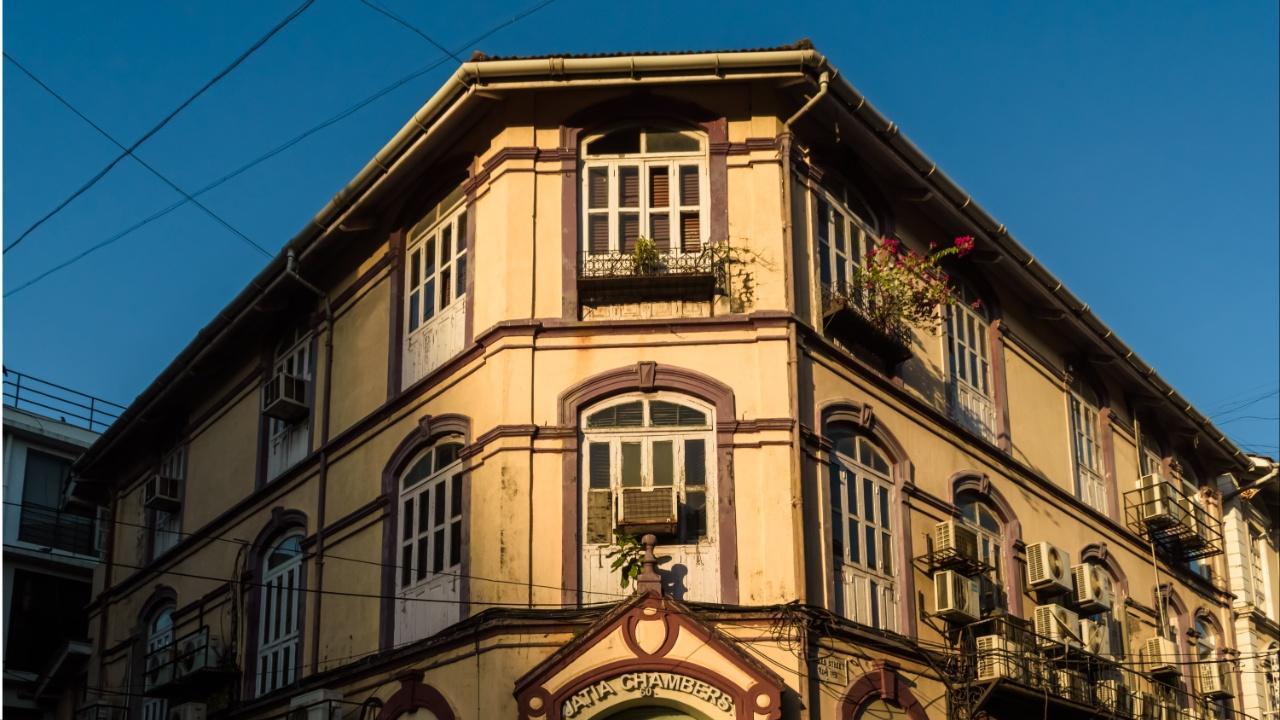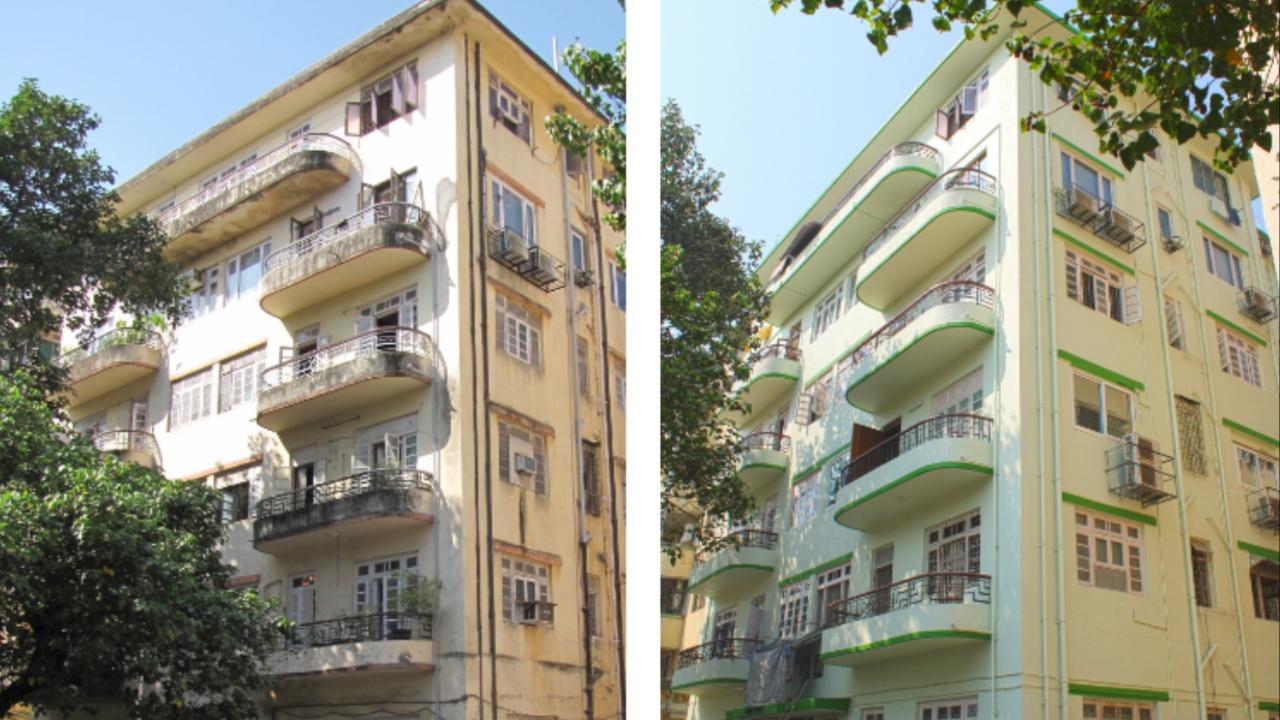Mumbai’s Art Deco precinct makes a feat amid global architects and designers at the ‘16th World Congress on Art Deco’, Florida, U.S. On World Maharashtra Day, Midday.com spoke to Atul Kumar who represents Mumbai’s conservation efforts for its famed Art Deco heritage

Art Deco Ensemble in Mumbai is a recognised UNESCO World Heritage Site, putting the city on the global map. Photo Courtesy: iStock
Marine Drive, the southernmost tip of Mumbai is buzzing with life. As the sun melts into the ocean, patrons flock for a leisurely walk at the promenade. Those who decide to sit at the wall, can’t help but notice the aerodynamic, modern buildings whose curves run into lines and triangles. Historian Gyan Prakash describes them as a glance at “utopia promised by the city on the sea.”
ADVERTISEMENT
These low-rise, neatly laid buildings now stand represented at a global design symposium in Miami. The 16th World Congress 2023 is an initiative to recognise and take steps for the revival of this modern living heritage. Incidentally, Miami Beach happens to be the first area in the world to start the conversation around preserving Art Deco, the playful 20th-century built form.
At the Congress is Atul Kumar, presenting a case study on the restoration and repair of Swastik Court, one of the 18 Art Deco apartments in the Oval precinct at Churchgate. In 2019, residents of the apartment implemented an elaborate plan for its repair and maintenance — 83 years after its construction. “Swastik Court went from being one of the most “decrepit” buildings (in the words of its own residents) to one of the best-looking addresses on the street”, remarks Atul upon its revival journey. The 12-day long conference came to an end on April 30.
The team of Art Deco Mumbai was invited to advise and share guidelines to restore the aesthetic and cultural significance of the building. “Swastik has high architectural integrity as no structural interventions were made to the property over its 85-year existence” shares Atul. This paved way for successful outcomes as it enabled the restoration of art deco features with minimal interventions by the occupants.
With the refurbishment carried out in a cost-effective way, the visual and historic value of the building has now grown exponentially. Art Deco Mumbai supervised the entire project, guided the residents, and managed the contractors and architects. Civic Activist and lifelong resident of Swastik Court, Nayana Kathpalia attests to the efforts, “The flats are spacious. It is relatively quiet, it is open, and it has got gardens. I think altogether, I feel very lucky and very, very blessed.”

Swastik Court falls under ‘The Victorian Gothic and Art Deco Ensembles of Mumbai’ and is a UNESCO World Heritage Site
At the Congress, Atul was joined by Kathleen Murphy Skolnik, art and architecture history teacher; Therese Poletti, Preservation Director, Art Deco Society of California, and author of Art Deco San Francisco and Fabio Grementieri, architect and specialist in historic preservation and architectural history, University of Buenos Aires.
Kathleen Skolnik, while speaking to Art Deco Mumbai, pointed out the limitations of seeing Art Deco as a comprehensive “style”. “Like many other scholars in this field, I try to avoid referring to Art Deco as a style because it is so diverse. For me, it’s better categorised as a spirit, an attitude, or an approach to design,” Skolnik states. She describes Art Deco designers as being “committed to developing a decorative aesthetic appropriate for a fast-paced industrial world, the world in which they were living.”
The champion of Mumbai’s Art Deco nomination to UNESCO as a World Heritage site, Atul is the founder of Art Deco Mumbai, a think tank that is chronicling, documenting, and advocating the conservation of Deco neighbourhoods in Mumbai. Found in 2016, his team has listed down more than 600 buildings, including residences, palaces, cinema halls, and hotels extending from Marine Drive to Matunga, Dadar, Mahim, and all the way up to the north.
At Mumbai’s coastline, Art Deco can be spotted easily. With its eye-catching bright colours and pastels, as well as its geometric lines and curves, chrome accents, window “eyebrows” and fountains, one cannot miss this fun and frivolous style. The neatly laid out Art Deco apartment buildings were built with uniform building heights, setbacks, high ceilings, balconies, and windows that brought in fresh air from the sea. Some of the iconic Deco buildings fronting the coast are Meghdoot, Shanti Nikten, Giri Kunj, Zaver Mahal, Keval Mahal, and Firdaus. Mumbai prides itself in housing the world’s second-largest collection of Art Deco structures, next to Miami.
Emerging in the 1920s, Art Deco became representative of an elite, upper-middle-class life, at least in its early debut in Bombay. “A product of the jazz age, it borrowed at times from the Egyptian civilisation, at times from ancient China or the Mayan and Aztec civilisation, but constantly defined itself as looking towards the future” pens down Atul in his study: “An Architecture of Style, Not Ideology.”
The style finds its origins in France but found its place in design literature some forty years later. English art historian and author Bevis Hillier called the 1925 Style Moderne, as Art Deco in his definitive 1968 book Art Deco in the 20s and 30s. Various factors that shaped the new architecture of this time were the abundant availability of cement, a new construction material that enabled cost-effective and speedy construction without the innumerable limitations of other materials like stone was the primary driver.
Atul recalls that land reclamations provided new spaces for urban development and the plague reinforced the need for hygienic and modern living spaces. Art Deco became the face of the vast land reclamations from the sea offering a glimpse into the bygone era. Here, Mumbai city dons its finest disguise to present the incarnation suitable for a capitalist age. “The squalor of slums, the violence of poverty and homelessness, the wretched effects of staggering inequality, and the oppression of power are tucked away from sight,” writes Prakash. Art Deco, which Prakash describes as the expression of the “aesthetic turn of capitalism”, becomes the face of this inequality at Marine Drive.
Also Read: Mumbai set to witness iconic musical live by Rodgers and Hammerstein’s Broadway troupe
 Subscribe today by clicking the link and stay updated with the latest news!" Click here!
Subscribe today by clicking the link and stay updated with the latest news!" Click here!







